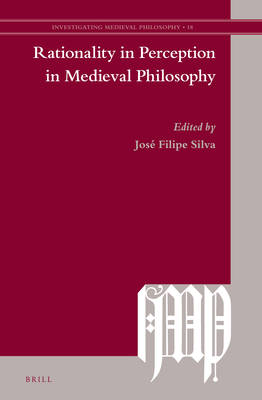
- Afhalen na 1 uur in een winkel met voorraad
- Gratis thuislevering in België vanaf € 30
- Ruim aanbod met 7 miljoen producten
- Afhalen na 1 uur in een winkel met voorraad
- Gratis thuislevering in België vanaf € 30
- Ruim aanbod met 7 miljoen producten
Zoeken
Rationality in Perception in Medieval Philosophy
€ 225,95
+ 451 punten
Omschrijving
How we come to know the external world has intrigued thinkers throughout the history of philosophy. Medieval philosophers understood that a theory of perception requires an account of the categorization of sensory information: to perceive things as being dangerous or beneficial and even as being individuals that belong to certain kinds (e.g., 'this is a dog'). A key question is whether this requires the intervention of rational cognitive capacities, cooperating with sensory ones in normal instances of perception. The contributions to this volume investigate how thinkers from the thirteenth and fourteenth centuries answer this and other related questions about human perception. Contributors are Fabrizio Amerini, Joël Biard, Véronique Decaix, Christian Kny, Lydia Schumacher, José Filipe Silva, and Jörg Alejandro Tellkamp.
Specificaties
Betrokkenen
- Uitgeverij:
Inhoud
- Aantal bladzijden:
- 220
- Taal:
- Engels
- Reeks:
- Reeksnummer:
- nr. 18
Eigenschappen
- Productcode (EAN):
- 9789004537071
- Verschijningsdatum:
- 19/01/2023
- Uitvoering:
- Hardcover
- Formaat:
- Genaaid
- Afmetingen:
- 155 mm x 235 mm

Alleen bij Standaard Boekhandel
+ 451 punten op je klantenkaart van Standaard Boekhandel
Beoordelingen
We publiceren alleen reviews die voldoen aan de voorwaarden voor reviews. Bekijk onze voorwaarden voor reviews.







